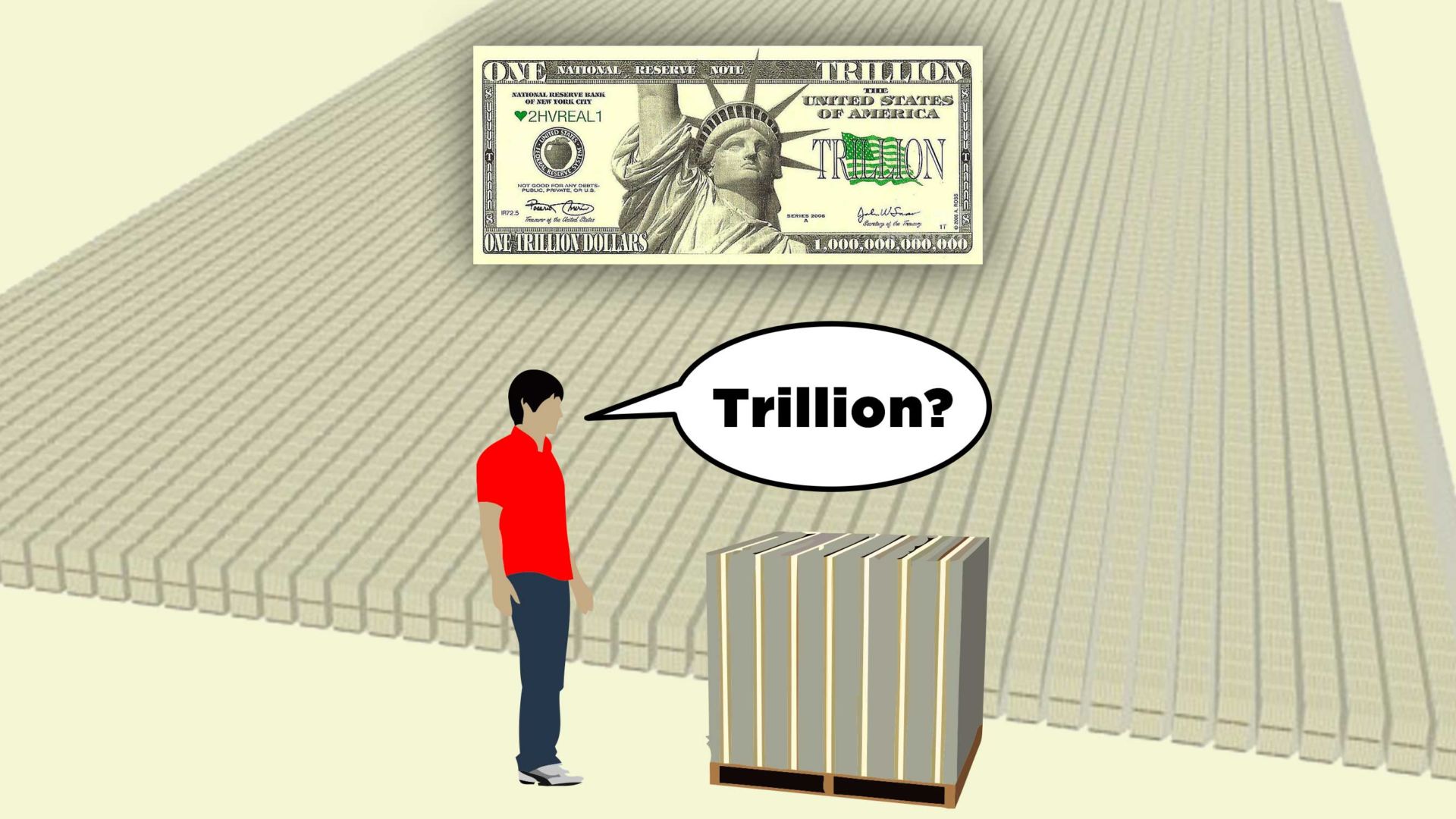What Comes After Trillion? Unveiling The Mind-Blowing Numbers Beyond Trillion
So, you're wondering what comes after trillion, huh? Let's dive into the world of big numbers and explore just how massive these figures can get. Numbers don’t stop at trillion, and there’s a whole lot more to discover. Whether you're a math enthusiast or just someone curious about the scale of things, this article will take you on a journey through the vast universe of numbers beyond trillion.
Numbers are kind of like the building blocks of our universe. They help us measure, count, and understand the world around us. But when we talk about numbers like trillion, it’s easy to feel a little overwhelmed. What happens when we go beyond that? What even comes after trillion? Well, buckle up, because we’re about to explore some seriously huge numbers that’ll blow your mind.
Before we dive deep into the numbers, let’s establish why understanding what comes after trillion is important. In today’s world, we deal with massive amounts of data, financial figures, and scientific measurements. Knowing how to name and comprehend these numbers can help us make sense of the universe and all its complexities. So, let’s get started, shall we?
- Why Jigjiga Wasmo Telegram Is Trending And Why You Should Care
- Jules Arii Rising Star In The Entertainment World
Table of Contents
- What is a Trillion?
- What Comes After Trillion?
- The List of Big Numbers Beyond Trillion
- Quadrillion: The Next Step
- Pentillion and Sextillion: Getting Bigger
- Googol and Beyond: Numbers That Defy Imagination
- Real-World Applications of These Numbers
- A Brief History of the Number System
- Interesting Facts About Big Numbers
- Wrapping It All Up
What is a Trillion?
Alright, let’s start with the basics. A trillion is a pretty big number, but what exactly does it mean? Well, in the short scale system, which is what most countries use, a trillion is equal to 1,000 billions or 1 followed by 12 zeros (1,000,000,000,000). To put that into perspective, if you stacked a trillion one-dollar bills, the pile would reach about 67,000 miles high. That’s roughly a quarter of the way to the moon!
But here’s the thing—trillion is just the beginning of the big number journey. Once you start venturing beyond trillion, things get really interesting. So, let’s move on and see what comes next.
What Comes After Trillion?
So, you’re probably wondering, “What comes after trillion?” Well, the answer is quadrillion. Quadrillion is the next big number after trillion, and it’s equal to 1,000 trillions or 1 followed by 15 zeros (1,000,000,000,000,000). It’s a number so big that it’s hard to wrap your head around, but it’s essential for understanding things like astronomical measurements and financial data.
- Crazyjamjam Leaked The Untold Story You Need To Know
- Boqorka Wasmada Telegram The Ultimate Guide To Exploring The Community
The List of Big Numbers Beyond Trillion
Here’s a quick rundown of the numbers that come after trillion:
- Quadrillion (1,000 trillions)
- Quintillion (1,000 quadrillions)
- Sextillion (1,000 quintillions)
- Septillion (1,000 sextillions)
- Octillion (1,000 septillions)
- Nonillion (1,000 octillions)
- Decillion (1,000 nonillions)
See how these numbers keep growing? It’s like a never-ending staircase of zeros, and each step takes you further into the realm of unimaginable magnitudes.
Quadrillion: The Next Step
Quadrillion is a number that’s often used in scientific and financial contexts. For example, the distance between stars is often measured in quadrillions of miles. In finance, countries with massive economies might have budgets in the quadrillions of dollars. It’s a number that helps us make sense of the vastness of space and the complexity of global economics.
But here’s the thing—quadrillion is just the beginning of the journey. There’s so much more to explore as we move further up the number ladder.
Pentillion and Sextillion: Getting Bigger
After quadrillion, we have pentillion, which is equal to 1,000 quadrillions. And then there’s sextillion, which is 1,000 pentillions. These numbers are so large that they’re rarely used in everyday life, but they’re crucial for fields like astronomy and physics. Imagine trying to count all the stars in the universe—that’s where numbers like sextillion come into play.
And if you think sextillion is big, wait until you hear about the numbers that come after it!
Googol and Beyond: Numbers That Defy Imagination
Now, let’s talk about some truly mind-blowing numbers. A googol is a 1 followed by 100 zeros. That’s a number so big that it’s hard to even comprehend. But here’s the crazy part—there’s a number called a googolplex, which is a 1 followed by a googol of zeros. That’s a number so massive that it’s literally impossible to write out in full because there wouldn’t be enough space in the universe!
Numbers like these are often used in theoretical mathematics and physics to explore the limits of our understanding of the universe. They’re a reminder of just how vast and complex the world around us really is.
How Do These Numbers Apply to Real Life?
While numbers like googol and googolplex might seem abstract, they do have real-world applications. For example, in cryptography, large numbers are used to create secure encryption systems. In physics, these numbers help scientists understand the behavior of subatomic particles and the nature of the universe. So, even though these numbers might seem far removed from everyday life, they play a crucial role in shaping our understanding of the world.
Real-World Applications of These Numbers
Let’s take a look at some real-world examples of how these big numbers are used:
- Astronomy: Measuring distances between galaxies and stars often involves numbers in the sextillions or even higher.
- Finance: Global financial systems deal with numbers in the quadrillions when calculating national debts and budgets.
- Cryptography: Large numbers are used to create secure encryption systems that protect sensitive information.
- Physics: Understanding the behavior of particles and forces in the universe requires working with numbers that are beyond comprehension.
These numbers might seem abstract, but they have practical applications that affect our daily lives in ways we might not even realize.
A Brief History of the Number System
Numbers have been around for thousands of years, but the way we understand and use them has evolved over time. The concept of zero, for example, was a revolutionary development that allowed mathematicians to work with larger numbers more easily. The decimal system, which we use today, was developed in India and later spread to the rest of the world.
As civilizations grew, so did the need for larger numbers. The ancient Greeks and Romans had systems for counting large numbers, but it wasn’t until the modern era that we started using numbers like trillion and beyond. Today, with the help of computers and advanced mathematical tools, we can explore numbers that were once thought to be unimaginable.
Interesting Facts About Big Numbers
Here are a few fun facts about big numbers:
- The word “trillion” was first used in the 17th century.
- A googolplex is so large that it’s impossible to write out in full—it would take more space than the observable universe!
- The largest known prime number, as of 2023, is 2^82,589,933−1, which has over 24 million digits.
- Some cultures use different names for large numbers—for example, in the long scale system, a billion is equal to a million millions.
These facts show just how fascinating and complex the world of numbers really is.
Wrapping It All Up
So, there you have it—a journey through the world of numbers beyond trillion. From quadrillion to googolplex, these numbers help us make sense of the vastness of the universe and the complexity of our world. Whether you’re a math enthusiast or just someone curious about the scale of things, understanding these numbers can open up new ways of thinking about the world around us.
Now that you know what comes after trillion, why not share this article with your friends and family? Who knows, you might just inspire someone to dive deeper into the world of mathematics. And if you’re hungry for more knowledge, check out some of our other articles on science, technology, and everything in between. Until next time, keep exploring and keep learning!

What Comes After Trillion Data science

What Comes After A Trillion? Do You Know?

What Comes After A Trillion? Do You Know?